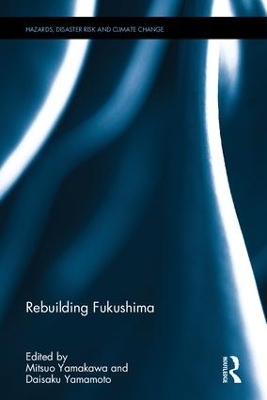
Rebuilding Fukushima
Routledge (Verlag)
978-1-138-19379-6 (ISBN)
Rebuilding Fukushima gives an account of how citizens, local governments, and businesses responded to and coped with the crisis of Fukushima. It addresses principles to guide reconstruction and international policy environments in which the current disaster is situated. It explores how reconstruction is articulated and experienced at different spatial scales, ranging from individuals to communities and municipalities, and details recovery efforts, achievements, and challenges in the realms of public transportation, agriculture and food production, manufacturing industries, retail sectors, and renewable-energy industries. This book also critically investigates the nature of the current reconstruction policy schemes, and seeks to articulate what may be required in order to achieve more sustainable and equitable (re)development in afflicted regions and other nuclear host regions.
Drawing on extensive fieldwork and local surveys, this volume is one of the first books in English that captures the knowledge and insights of native Japanese social scientists who dealt with the complexities of nuclear disaster on a day-to-day basis. It will be of great interest to students and scholars of disaster-management studies and nuclear policy.
Mitsuo Yamakawa is Professor of Economic Geography at Teikyo University and Extraordinary Professor of the Fukushima Future Center for Regional Revitalization (FURE) at Fukushima University. Daisaku Yamamoto is Associate Professor of Geography and Asian Studies at Colgate University, Hamilton, New York. His recent work focuses on community resilience, regional inequality, and uneven development.
List of figures
List of tables
List of contributors
Preface and acknowledgments
Map of Fukushima Prefecture
Introduction
Mitsuo Yamakawa and Daisaku Yamamoto
1 Five principles for the reconstruction of the nuclear disaster-afflicted areas
Mitsuo Yamakawa and Katsumi Nakai
2 International efforts to support disaster risk reduction
Satoru Mimura
3 Challenges of just rebuilding: case studies of Iitate Village and Tomioka Town, Fukushima Prefecture
Akihiko Sato
4 Why do local residents continue to use potentially contaminated stream water after the nuclear accident? A case study of Kawauchi Village, Fukushima
Takehito Noda
5 Securing mobility in the nuclear disaster-afflicted region: a case study of Minami-Soma
Itsuki Yoshida
6 Toward effective radioactivity countermeasures for agricultural products
Hideki Ishii
7 Resilience of local food systems to the Fukushima nuclear disaster: a case study of the Fukushima Soybean Project
Takashi Norito
8 Impacts of the disaster and future tasks for the recovery of small and medium-sized manufacturing firms in Fukushima
Toshio Hatsuzawa
9 Bringing businesses back, bringing residents back: efforts and challenges to restore commerce in formerly evacuated areas
Akira Takagi and Masayuki Seto
10 Renewable-energy policies and economic revitalization in Fukushima: issues and prospects
Yoshio Ohira
11 Beyond developmental reconstruction in post-Fukushima Japan
Daisaku Yamamoto and Mitsuo Yamakawa
Index
| Erscheinungsdatum | 25.05.2016 |
|---|---|
| Reihe/Serie | Routledge Studies in Hazards, Disaster Risk and Climate Change |
| Zusatzinfo | 19 Tables, black and white; 23 Line drawings, black and white; 8 Halftones, black and white; 31 Illustrations, black and white |
| Verlagsort | London |
| Sprache | englisch |
| Maße | 156 x 234 mm |
| Gewicht | 453 g |
| Themenwelt | Naturwissenschaften ► Biologie ► Ökologie / Naturschutz |
| Naturwissenschaften ► Geowissenschaften ► Geografie / Kartografie | |
| Naturwissenschaften ► Geowissenschaften ► Geophysik | |
| Sozialwissenschaften ► Politik / Verwaltung | |
| Technik ► Elektrotechnik / Energietechnik | |
| Technik ► Umwelttechnik / Biotechnologie | |
| Weitere Fachgebiete ► Land- / Forstwirtschaft / Fischerei | |
| ISBN-10 | 1-138-19379-8 / 1138193798 |
| ISBN-13 | 978-1-138-19379-6 / 9781138193796 |
| Zustand | Neuware |
| Haben Sie eine Frage zum Produkt? |
aus dem Bereich


